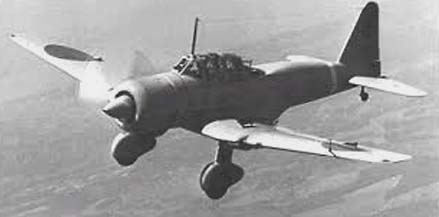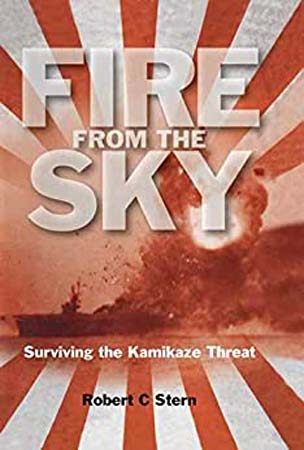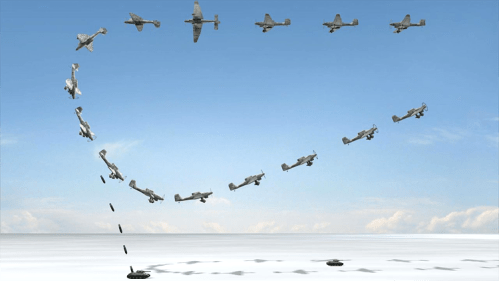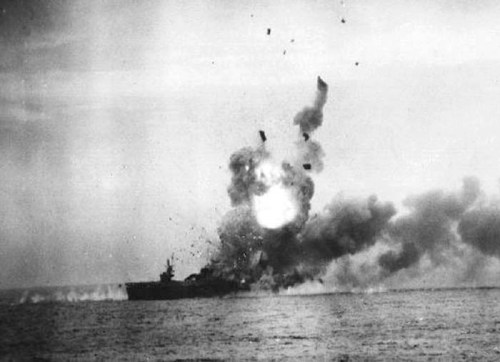I was telling you last time how author Robert C Stern had listed in his excellent book about the kamikaze phenomenon, the numbers of men killed and wounded in various US Navy ships:
“……….with 16 killed and 21 wounded, the Colorado with 19 killed and 72 wounded, the Maryland with 31 killed and 30 wounded, the Aulick with 31 killed and 64 wounded, the Mugford with 8 killed and 14 wounded, the Lamson with 25 killed and 54 wounded, the Drayton with 6 killed and 12……”
The USS John Burke apparently blew up as soon as it was touched by a “Zeke” and both the ship and the 107 men on it were instantly vaporised. Not the slightest trace of them was ever found. This is the USS Suwannee, but you probably get the gist:
The worst day, Kamikaze-wise, was January 6th 1945. The Japanese caused damage to 15 American ships and killed 167 men and wounded 502. They lost 30 aircraft and 30 pilots. And in their strange alien world, it was a good return. US Navy policy was to push badly damaged aircraft into the sea. This was the USS Belleau Wood:
Author Robert Stern, explains extremely carefully the techniques used by the kamikazes. They usually came in fairly slowly, low in the sky, just above the horizon, trying not to draw attention to each other, pretending to be one of the many US Navy aircraft which always seemed to be around. Their favourite time was either at dawn or at sunset, with the light or the darkness helping to hide them. Their preferred weather was a clear morning followed by an afternoon which was cloudy with squalls, perhaps even thunderheads, rising high above the ships. Clouds and poor visibility helped the kamikaze to hide from the anti-aircraft fire. Such weather conditions used to be called “kamikaze weather”. In the picture above, note the sailors all standing in the safest place to stand:
A great many good men were killed or seriously injured by kamikaze attacks. 66 ships were sunk, and an unknown number were damaged, some of them so seriously that they only returned to Pacific waters in 1946.
Nobody ever suggested, though, at any point, that the war should be stopped. There was rather a desire to get the job done with the minimum number of casualties. Even so, the kamikazes had “a terrifying psychological value”. How’s this for “terrifying psychological value”..?
Vice Admiral Onishi Takijiro wanted to use this “terrifying psychological value” to force the Allies to postpone or even cancel their attack on the home islands of Japan. He would have wanted a Japanese surrender that was not unconditional, he would have wanted not to have had any Allied soldiers on the sacred soil of Japan, and, fairly unbelievably, for Japan to have kept such overseas colonies as Manchuria.
Some ships were hit by more than one kamikaze either in the same incident or on different days. The most frequently struck ship is usually reckoned to be HMAS Australia. On October 21st 1944 it was hit by a Sonia dive bomber, although this may have been a “jibaku” act, when an already doomed aircraft was plunged into a nearby ship. 29 men were killed and 64 were wounded.
Here’s a “Sonia”:
And here’s HMAS Australia:
On January 5th 1945, a “Zeke” hit the HMAS Australia and killed 25 men and wounded 30. On the 8th, a “Dinah” hit at 0720 hours but caused no damage. At 0739, a second “Dinah” caused lots of serious damage. The ship was forced to list and to have its speed reduced. Many of its guns were put out of action. And then, at 1302 two “Val” dive bombers caused severe damage to the funnel, which rendered the forward fireroom unusable because of the subsequent lack of updraught. At the end of the day, HMAS Australia left Leyte Gulf for repairs, initially at Sydney, then in the USA and finally at Plymouth in the United Kingdom.
Let’s finish with a slideshow. Number one is “Val”, then there’s a “Dinah”, reckoned to be one of the most beautiful aircraft ever designed, and the last one is a Mitsubishi Zero.
The photograph of the “Dinah”, I took. If only I had had the brains to crouch down and lose the backlighting. What a stupid “Baka” as the Japanese say.















